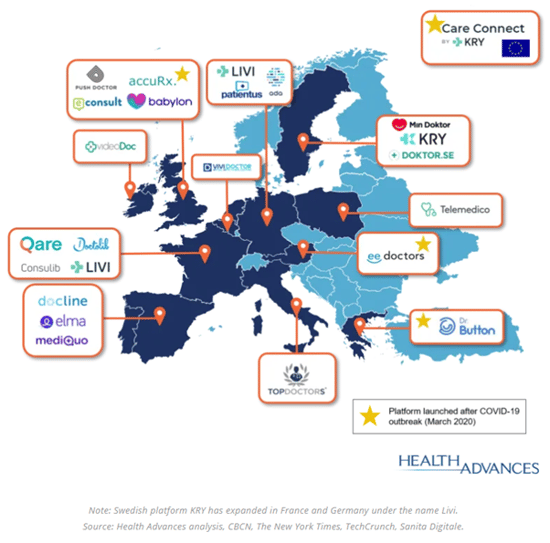Telemedicine, telehealth, or eHealth has become an essential component of healthcare worldwide.
It allows remote interaction between patients and clinicians. It also enables the delivery of healthcare services and access to advice, education, intervention and many of the health solutions offered by a face-to-face consultation.
Continuity of care is now possible due to the availability of digital solutions including a mix of virtual visits, remote monitoring tools, eHealth and emergency response systems.
The pain points of telemedicine adoption across Europe
As the continuing impact of COVID-19 affects healthcare sector providers in the UK and across Europe, telehealth is emerging as a lifeline in ensuring efficient access to essential healthcare services. Healthcare organisations have been forced to rapidly adjust their unified communications strategies to accommodate remote workers as well as rapidly expanding facilities.
However, Europe’s different jurisdictions have varied regulatory, safety and medical liability requirements, as well as siloed public reimbursement elements.
The teleconsultation landscape in Europe shows that established countries like Sweden, the UK and France are seeing a growth in competition between platform providers. Those countries in the initial stages are also slowly showing growth, driven by the ongoing effects of the pandemic.

Source: Health Advances
The future of telemedicine in Europe
The European Commission has already put in place several policies to improve EU interoperability and standardisation in healthcare. The eHealth Action Plan aims to make use of information and communication technologies to improve healthcare in Europe. The benefits of these solutions are many:
- Improved quality and safety of care, up-to-date patient status information and evidence-based clinical guidelines.
- Enhanced safety of treatments, integrated care including safe, quality treatment abroad.
- Interoperable systems for lower implementation and integration costs, for example an MRI image made available to view by various professionals without the need for repeat tests.
- The use of a common eHealth interoperability framework can open up competition and reduce costs for platform developers.
Unified Communication: The core of telemedicine
Digital technology, and unified communication as a critical business strategy, has made an enormous impact in the delivery of healthcare in general. Without UC, and the widespread adoption of mobile technology, and cloud-based communications, telemedicine wouldn’t be possible.
All telehealth infrastructures require:
- Access to a reliable broadband connection and sufficient bandwidth to transmit audio and video data.
- Imaging technology or peripherals, like digital stethoscopes, otoscopes, examination cameras and other remote patient monitoring technologies.
- Health apps and wearables that can enable patients to monitor their health and disease and help healthcare workers to quickly check results.
- Technical support staff who can possibly operate across collaborating organizations.
- Staff training to bring staff up to speed using telehealth technology.
Why UC monitoring and performance management is vital
When used in a healthcare application, UC platforms can be extremely complex. There are multiple vendors, various SBCs, servers, gateways and other critical elements that make up the intricate medical UC ecosystem.
In addition, healthcare professionals and patients, who may be distributed across a vast number of locations, need access to Electronic Health Records (EHRs).
And of course security issues and data breaches in relation to sensitive information is a key challenge in telemedicine.
With all these elements to consider, the need to monitor is crucial to avoid unplanned downtime, video call outages, and data breaches. Monitoring call quality metrics like latency, jitter, packet loss and MOS scores are important to proactively prevent problems, identify root causes and effectively manage risk.
Monitoring and troubleshooting are the insurance that helps keep the telemedicine industry compliant, through complete visibility across an entire collaboration ecosystem.
Want to know more about delivering high-quality UC for healthcare? Download our checklist.





